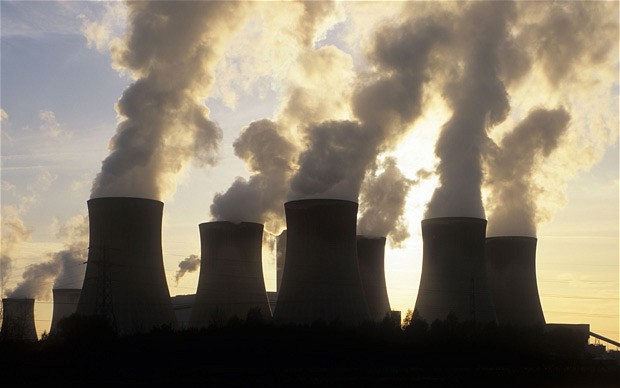Nearly $1 trillion (£700 billion) is being invested in new coal-fired power plants worldwide despite the fact that the demand for electricity generated from coal has declined for two years in a row, shows a new report released this week.
The report, by Greenpeace, the Sierra Club and CoalSwarm, warns that this problem of overbuilding is creating an “increasingly severe capacity bubble”.
 Last year the global power sector added at least 84 gigawatts (GW) of new coal power capacity. This is a 25 percent increase from 2014.
Last year the global power sector added at least 84 gigawatts (GW) of new coal power capacity. This is a 25 percent increase from 2014.
As the report explains, across the world a generating capacity equal to 1,500 coal plants is either in construction or in various stages of planning. The amount of capital potentially wasted on these plants comes to $981 billion.
Yet, the average coal plant is running fewer and fewer hours each year.
In China for example, the consumption of coal for electricity generation dropped 3.6 percent last year. Currently, the average Chinese coal plant runs less than half the time – the lowest level since 1969 – and the government recently announced plans to halt new coal plant approvals.
And in India, 11GW of thermal capacity is lying idle. Last year saw the first drop in India’s annual coal power installations since 2006 and the report expects this the drop “to be even more pronounced” in 2016.
“The era of Big Coal is clearly coming to an end,” said Nicole Ghio, senior campaigner for the Sierra Club’s International Climate and Energy campaign. “Coal use keeps falling off a cliff and plants are sitting idle, yet more money is being wasted on misguided attempts at locking in this dirty, dangerous fuel.”
Lauri Myllyvirta, senior global campaigner on Coal and Air Pollution at Greenpeace, described the situation as a “last-ditch push” by an industry which is becoming “rapidly uncompetitive”.
But while coal plant retirements may be growing globally, led by efforts in Europe and the US, this is not happening fast enough to balance out the overbuilding.
As the report warns, the danger of all this potential capacity sitting idle is that, in the end, it might be used but with significant impact on the world’s ability to meet its climate targets under the Paris Agreement.
“Even with no further building of coal plants, emissions from current coal plants will still be 150 percent higher than what is consistent with scenarios limiting warming to 2°C,” it explains, “meaning that most operating and new coal-fired plants will have to be phased out well before the end of their planned lifetime.”
Even building “high efficiency” coal plants is not a viable solution the report states, since this would lock in “large, long-lived carbon emitters, interfering with the need to fully decarbonise the power sector by 2040 in order to limit warming to 2°C”.
Instead, the report argues that the amount wasted on the coal capacity bubble should be direct towards alleviating energy poverty and investing in clean energy such as wind and solar power.
It notes that the nearly $1 trillion wasted is equivalent to the total level of investment needed to provide electricity to the 1.2 billion people currently lacking access to energy according to the International Energy Agency.
This would also be enough money to increase the amount of solar and wind power installed globally by 39 percent, the report finds.
“The hundreds of billions being thrown at coal could instead go toward the booming clean energy sector, helping more than a billion people get access to the clean, reliable electricity that fossil fuels have failed to deliver,” explained Ghio.
In addition to its significant climate impact, the report finds that the additional new proposed coal capacity would result in over 130,000 more premature deaths worldwide each year due to air pollution.
“The clock is ticking on the transition to clean energy,” said Ted Nace, director of CoalSwarm. “Although this research has revealed hundreds of billions being squandered on unneeded coal plants, there’s more at stake here than money.”
By Kyla Mandel (Desmog)
